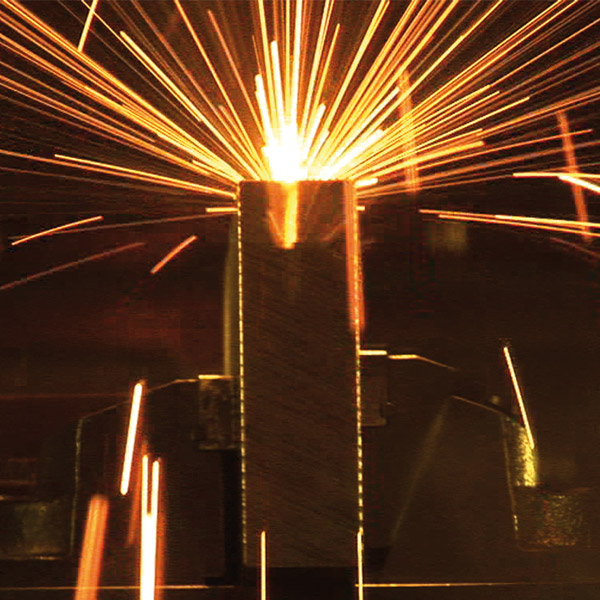High precision and exact reproducibility
The stability of the small electron beam diameter in the focus is the basis for high geometrical precision. Almost all work parameters are controlled electronically and can be easily adjusted to changed tasks. This results in excellent reproducibility of the results from applications.
The economy of electron beam technology
- High efficiency
- High working speeds
- Minimal heat input
- Contactless operation
Cost savings
- Enhanced choice of materials
- Avoidance for reworking and corrections (minimum distortion)
- Integration in production lines
- Abdication of filler material and shielding gas
- New ways in design and production planning enables improvements in existing and realization of completely new products

The advantages of EB welding in detail
Electron beam welding is used for joining metallic materials. The very thin weld with its narrow heat affected zones minimises the energy transferred to the work piece and its distortion. Parts and subcomponents that require a high level of mechanical pre-processing can be joined using this method without being damaged due to the low angular distortion and the minimal cross-sectional shrinkage.
Added to this is the fact that of all fusion welding methods, electron beam welding produces the lowest energy per section and attests to the best electrical efficiency.
Electron beam welding is used in a wide range of applications from welding films to large work pieces over 200 mm thickness. Even such deep welding seams are done in just one operation without additional filler material. Here the electron beam injects the heat across the whole depth of the weld (deep weld effect). The percentage of energy absorbed during EB welding is in the range of 90 to 95 % and the energy of the electrons impinging to the work piece is converted directly into heat by the interaction with the metal atoms. Thus, the welding speed is not limited by the heat conductivity of the materials.The electron beam is deflected and focused without any inertia by electromagnetic lenses. So, it is possible to weld materials that are usually less suited to the process by inertia-free oscillation of the electron beam. Due to variable welding, a wide variety of workpiece shapes can be welded.
An extremely fast electron beam deflection makes other applications possible, which could only be done with difficulty, if at all, using another welding method. It would therefore be possible in a single process to use the electron beam to look for the weld joint ahead, to weld the work piece using the correction values, and to finish by cosmetically treating of the weld. So, it is also possible to weld a suitable work piece „quasi-simultaneously" at several places. In this case the electron beam is diverted by the deflection system from one welding position to the next in fractions of a second. The welding will be continued before the vapour capillary collapses at this position. Also, the preheating of the workpiece can be performed parallel to the weld.
The high power density of electron beam welding in a vacuum offers a number of advantages:
- Narrower welds than average
- Very small heat affected zones without tarnishing effect
- Great welding depths
- High welding speeds
- Exact reproducibility of the welds
- Consistent quality
The conventional welding of reactive materials, such as e.g. Titanium is usually done under a (expensive) shielding gas atmosphere.
With electron beam welding, excellent metallurgical results are achieved without harmful emissions in the vacuum of the electron beam chamber, which is at a pressure of 5 x 10-4 mbar.
If the design of mechanical components is adapted to the possibilities of the electron beam welding process, this electron beam technique opens up tremendous advantages for fabrication in many sectors of modern industry.

 Deutsch
Deutsch  English
English  Français
Français  Polski
Polski  Italiano
Italiano 






